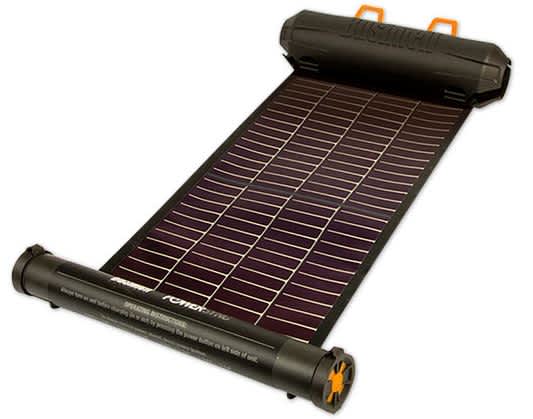Portable Power Products for Outdoorsmen Are Better Than Ever
Laurie Lee Dovey 08.05.14

Fifteen years ago, I wouldn’t have considered carrying a cell phone with me in the wilderness or out on the water. Certainly, having a computer along, even a laptop, was laughable.
Where would the power come from? How could the (heavy) batteries be transported? Why in the world would I need (or want) to have electronics in the field?
Ah, as Bob Dylan wrote and sang way back in the early ’60s, “The times, they are a-changin’.”
 Now, I can’t imagine being on a hunt, camping adventure, or fishing trip without, at the very least, my cell phone and tablet. They’re my cameras, weather stations, outdoor journals, and on-the-spot broadcasting tools—whether that’s broadcasting to social media or a media outlet proper.
Now, I can’t imagine being on a hunt, camping adventure, or fishing trip without, at the very least, my cell phone and tablet. They’re my cameras, weather stations, outdoor journals, and on-the-spot broadcasting tools—whether that’s broadcasting to social media or a media outlet proper.
Tooling around town, I have my 12-volt charger in the car and a small, one-hour power tube in my bag. Electric outlets also are available just about everywhere.
When fishing the buoy line out of Cape Canaveral, Florida or stalking the turkey woods of northern Pennsylvania, access to power is usually a long ways away. Actually, that’s a lie. That was true in the old days. Today, power is in my backpack or shining down on me from above.
Tapping into solar energy or transporting enough power into the field for the day is easy, quick, and accomplished with lightweight, durable gear. Best of all, new products have significantly raised the performance bar.
Bushnell recently allowed me to test two of the company’s PowerSync products. The SolarWrap 250 and Power Charger performed as promised. Both products also outperformed others I’ve tried.
Focusing on solar energy and the SolarWrap 250, I was able to fully charge the device’s battery in four hours of full sun and fully charge my cell phone as quickly as I charge it at home. I was able to double my in-the-field use, which meant being able to access my marine navigation apps for the full day, not just a few hours. I even had power to spare.
I also used the product on a less than perfect day, under some cloudy conditions, and still obtained a full device charge.
 Bushnell claims, and rightfully so, its solar-based products provide users with:
Bushnell claims, and rightfully so, its solar-based products provide users with:
- Dependability (in solar products). They gather sun and power at any angle and in most sunlight conditions, even modest cloud cover. Amorphous Thin Film collects solar power faster over time than other solar panels. PowerSync panels work in less than ideal conditions and don’t require a direct angle to the sun. Products with mono- and poly-crystalline panels will not perform in less-than-desirable conditions
- Ability to charge the device from a wall outlet as well as use the sun’s power for total flexibility
- Lightest-weight technology for carrying
- Superior storage as a result of the compact designs
- Durability and operation under rugged use, where other products fail
- Intuitive and integrated components. There’s no kit necessary
- Simple plug-n-play use complimented by easy-to-understand (visualize) battery gauge
- Reliability. The product do what they says they will do
If you’re interested in harnessing the power of the sun, ask yourself and manufacturers questions when comparing products, including:
- How long will I be out and how much power does the solar/powering device need to generate to recharge my electronics?
- How much room do I have to store portable power devices?
- How important is weight?
- How much sun is required for top-end functionality?
- How much rugged use does the product need to endure?
When comparing, also be careful to equally compare performance claims. Use investigative techniques to gather data and knowledge to ensure you select the best solar product for your outdoor needs.


